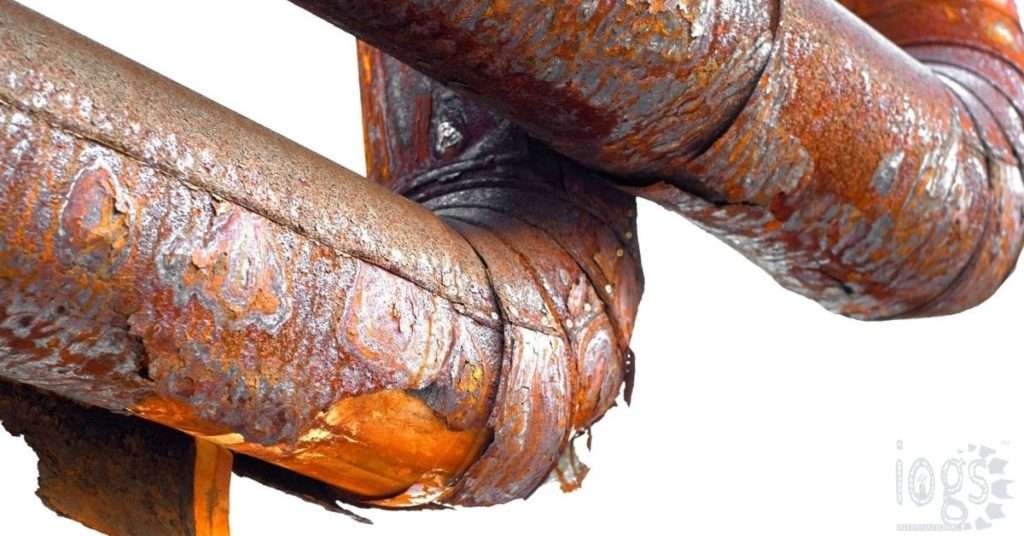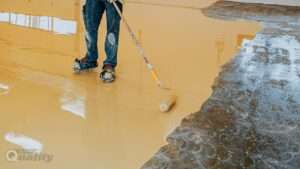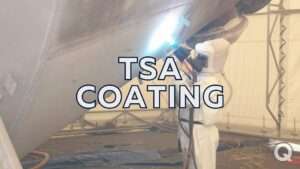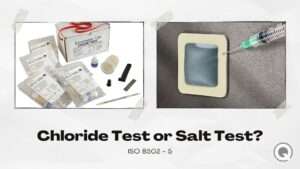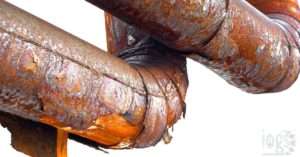Corrosion under insulation (CUI) is the external corrosion of outside equipment made from carbon-manganese, low-alloy, and austenitic stainless steel due to the absorption of water under the insulation.
It has been several decades since the CUI has been one of the major common problems across a wide range of industries worldwide. Still, we didn’t find out a way to eliminate it completely, instead, we just rely on several techniques to minimize the issue.
This article will provide an understanding of the following:
- What is Corrosion Under Insulation (CUI)?
- Why Insulate?
- CUI Causes
- Corrosion Types
- CUI Identification
- Rate of CUI
- CUI Maintenance Costs
- CUI Temperature Ranges
- Applicable Codes and Standards
1. What is Corrosion Under Insulation (CUI)?
Corrosion under insulation, also known as CUI, is a serious problem that affects thermally insulated mechanical components. It is known as the hidden enemy because its detection can be too late resulting in disastrous outcomes such as leakages, loss of containment, and even fire and explosion.
One study shows that the petrochemical industry spends approximately 10% of its maintenance and repair budget on piping systems and pressure vessels due to CUI.
To better understand CUI, you first need to understand the reasons for insulating piping and vessels.
2. Why Insulate?
Insulation, or more correctly thermal insulation, is a material or system used to reduce the movement of heat or sound. It is a critical feature in oil refineries and industrial process plants.
If you look closely at any industrial plant, you will see they are surrounded by insulated pipes, equipment, and vessels. These mechanical components can either receive hot, cold, or acoustic insulation systems.
To better visualize, an oil refinery contains about 73 miles of insulated pipes and 2.5 million square feet of insulated equipment. Many different types of insulations are used to insulate the mechanical components in an industrial plant.
There are several reasons for using insulation, including:
- Energy conservation
- Heat conservation
- Process control
- Cold conservation
- Condensation control
- Acoustic attenuation
- Personal protection
3. Corrosion Under Insulation Causes
Water causes CUI when it enters an installed insulation system. Unfortunately, it’s not simple to design and install insulation systems because there are many different ways that water can seep into them. For example:
- Insulation material gets wet during storage or installation.
- Protective jacketing installed incorrectly or prove ineffective at preventing water ingress.
- Protective jacketing become damaged after installation.
- The protective coating/painting becomes damaged and/or not touched up (refurbished) appropriately before insulation work.
- The protective coating can be ineffective as a barrier between the water, that ingresses under the insulation, and the metal.
Now that you know the cause of CUI, allow me to explain the type of corrosion that occurs under the insulation.
4. Types of Corrosion Under Insulation
Corrosion on carbon steel usually resembles a general or pitting appearance. On austenitic stainless steel, it almost always consists of chloride stress corrosion cracking (CLSCC).
Water that ingresses into the insulation system passes through the insulation material to reach the outer surface of the insulated item; however, when closed-cell insulations are used, the water cannot pass through it easily, but will still find ways to reach the surface (e.g., through joints or breaks).
Immediately upon reaching the steel through one or more breaks in the protective coating, water begins acting as an electrolyte to complete the corrosion cell triangle. The result is the general or pitting corrosion on the carbon steel substrate.
If the water contains chloride, it causes CLSCC on the stainless-steel surfaces. Where does the chloride come from? It’s important to know that water itself may contain chloride. Additionally, water can also leach out chlorides from insulation and/or accessories material.
Now that we’ve discussed the types of corrosion that occur under the insulation, it’s time to understand how you can identify such corrosion.
5. CUI Detection
CUI detection is difficult because insulation, by its very nature, creates a barrier between the insulating surface and the environment. Thus, finding it involves several steps, including:
- Visual inspection
- Non-destructive testing (NDT)
A visual inspection involves either partially or completely removing the insulation to check the integrity of the insulated surface. The problem with this approach is that removing the entire insulation, whether partially or fully, is costly and time-consuming. Insulation removal is often carried out during a plant shutdown.
Insulation removal methods are qualitative; therefore, they cannot directly measure the metal thickness loss due to CUI. The use of a pit depth gauge can quantify the metal loss due to corrosion.
NDT is another CUI detection method. While not as effective as insulation removal, it is common practice to use NDT when insulation removal is not a practical option.
The NDT techniques require detailed knowledge of the piping system or equipment layout, as well as the advantages and disadvantages of using a cost-to-benefit ratio. The following NDT techniques are common for CUI detection:
- Moisture meter
- Infrared thermography
- Pulsed eddy current
- Flash radiography
Now, let’s determine the CUI range.
6. The Rate of Corrosion Under Insulation
Corrosion Under Insulation usually remains undetected until the protective jacketing and insulation are removed. removing insulation as soon as the water gets in, indicates less potential for CUI; however, CUI is more likely if it takes five or more years for the insulation removal.
The CUI rate depends on the water’s conductivity. If the infiltrating water contains soluble salts (e.g., sulphates and chlorides), it will accelerate the CUI rate.
The rate of CUI is about 20 times faster than atmospheric corrosion. The range of metal loss due to CUI is 1.5mm – 3mm annually.
For example, a pipe has a total wall thickness of 15mm (i.e., 10mm thickness and 5mm corrosion allowance). If we consider that the CUI rate where the pipe will be installed is 2.5mm/year, it may only take 2 years before the CUI eliminates the corrosion allowance making the pipe prone to leakage or breaking.
7. Temperature Ranges of CUI
Corrosion Under Insulation appears in temperature ranges between −4 °C (25 °F) and 175 °C (347 °F). While CUI problems have been reported outside this range; the majority are within the specified range.
Generally, the metal temperature is the same as the process operating temperature for insulated pipe/equipment. If the insulation is damaged and/or highly humid conditions exist, a process temperature significantly above 121 °C (250 °F) can result in metal temperatures low enough to cause CUI. As a result, the CUI range exceeds 175 °C (347 °F).
Additionally, CUI also takes place on equipment subject to cyclic temperatures or dead legs, which are outside the said CUI range,
8. Applicable Codes and Standards
There are several codes and standards are available to learn and mitigate the CUI, the 3 most popular standards are as follows:
- ASTM STP 880 – Corrosion of Metals Under Thermal Insulation
- NACE SP0198-2010 – Control of Corrosion Under Thermal Insulation and Fireproofing Materials
- API RP 583 – Corrosion Under Insulation and Fireproofing
Thank you for taking the time to view this article. We hope we have provided you with sufficient knowledge of corrosion under insulation (CUI). If you wish to learn more on this topic, you may visit www.iogs.com. Also, don’t forget to read the related articles outlined below or enroll in a course related to thermal insulation, inspection and quality control, or CUI.
MORE INFORMATIVE ARTICLES
Enhance Your Cold Insulation Skills
What is Corrosion? Why Metal Corrodes?
How to Make Career in Oil & Gas Industry
Reasons fo Insulating Piping and Vessels of an Oil Refinery
RELEVANT COURSES

